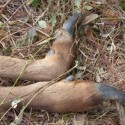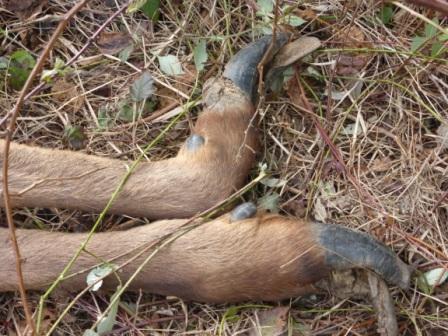My family has hunted the forests of southwest Washington for more than sixty years and never before have they observed such a scarcity of wildlife. Twenty years ago my dad and uncle remember seeing two or three big elk herds a day. Now we’re lucky to see two or three individuals a day. Depressingly, this past fall marked the first time in three decades that our entire hunting party failed to harvest a single elk from the Coweeman unit. I later learned that the Coweeman elk population has dropped by seventy percent in recent years.
Something is afoot in our local forests, and I’m convinced that the epidemic of hoof disease currently ravaging the elk population surrounding Mount St. Helens is only the alarm. Everyone in my hunting party now believes that the herbicides Weyerhaeuser and other private timber companies are spraying on new growth habitats is one of the chief causes of our wildlife shortage which includes deer, grouse and just about every other animal out there. After several years of diminishing returns, I (like many others) have been on a path of inquiry to understand just what is happening in our forests, and so far the insights have been disturbing.



